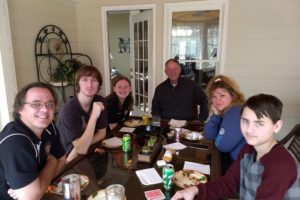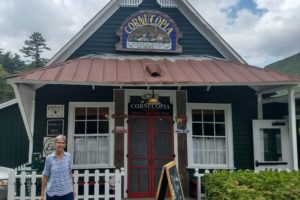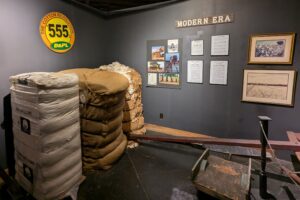You know how we described the end of the 40-Mile Desert that the emigrants endured as they walked to the California gold fields? It ended at Ragtown Crossing on the Carson River, just a couple of miles west of Fallon. A post office came to the area in 1896 at Mike and Eliza Fallon’s store. But at the turn of the 20th century, this area was just a dusty crossroads at what is now Interstate 95 and US 50. But change was on its way.

Rumors were in the air about a project to build a dam and canal to irrigate, or “reclaim,” desert lands. After President McKinley was assassinated in 1901, Theodore Roosevelt, a longtime conservationist, became president. He established the Reclamation Act of 1902, creating the United States Reclamation Service (USRS).
After Warren W. Williams bought Mike Fallon’s ranch, the city started to grow with streets laid out and the main street named after Williams’ native state of Maine (it had been Main Street). In 1903 Williams was a State Senator Williams, and he introduced legislation to move the county seat from Stillwater to Fallon. A new courthouse was built, and many businesses moved here to be at the county seat.
The new irrigation project along the Carson and Truckee Rivers began in 1903. We haven’t talked about the Truckee River since it wasn’t part of our narrative about the wagon trains going to the gold fields, but it is a major river flowing downstream from the mountains around Truckee, around Reno, and ending up at Pyramid Lake where the water would “sink” into the land, benefiting no one.
In 1903 work began on the Derby Diversion Dam on the Truckee River. A 36-mile Truckee Canal construction began in 1905 bringing water from Pyramid Lake to the Fallon area. However, project leaders soon realized that the water from Truckee River wouldn’t be enough for the 20,000 settlers that they thought would be coming. (And they were right! In 2017, population in Churchill County was over 24,000.)


With the need for more water, in 1910 project leaders stopped people from coming into the area so a storage reservoir could be built. Work on the Lahontan Dam began in 1911 and completed in 1914; homesteaders flowed to the area drawn by a national USRS advertising campaign. We know that bringing water into a desert area results in major population growth.
So how did these canals work, and what did they look like?

Here’s the model of the canal irrigating fields.

This farm land is being irrigated by the water coming through the canal at the bottom of the picture.

A worker on Mrs. Rehmel’s farm is overseeing the beginning of her homestead where she was growing garden crops using row irrigation.

changes because of the dam and canal
In 1912 electricity generated below the Lahontan Dam reached Fallon, and residents were thrilled.
The 1920s farmers grew Hearts-O-Gold cantaloupes and shipped them all over the U.S. and had almost a near monopoly on sales in Nevada and northern California. These jumbo-sized melons had an amazing flavor and proven quality.
Turkeys raised on Churchill County farms have a similar reputation. Farmers raise thousands of birds every year, and some have been enjoyed by presidents on Thanksgiving.
In 1942 the Navy established the Fallon Naval Air Station south of town. Since 1972 the base has been training top gun pilots at the headquarters for the Naval Strike and Air Warfare Center known as TOPGUN. We heard that a new Top Gun movie is being filmed here.
In 1948 the Chamber of Commerce described Fallon as the “Oasis of Nevada,” and the name has stuck. This area is a truly lush agricultural haven in rural Nevada desert.
The Lahontan Reservoir is now a popular water destination for local residents. As we drove past it coming into town, we had no idea of its history and importance. Now we’re glad we know!
Much of this information is from the town’s Historic Walking Tour of Maine Street, Fallon, Nevada, brochure. We’ll take a walking tour in another blog. Information is also from the county’s local museum, and we’ll see more of it in another blog also.




